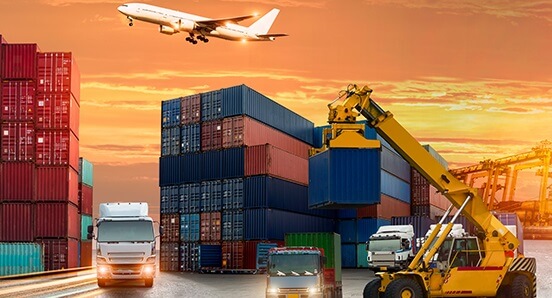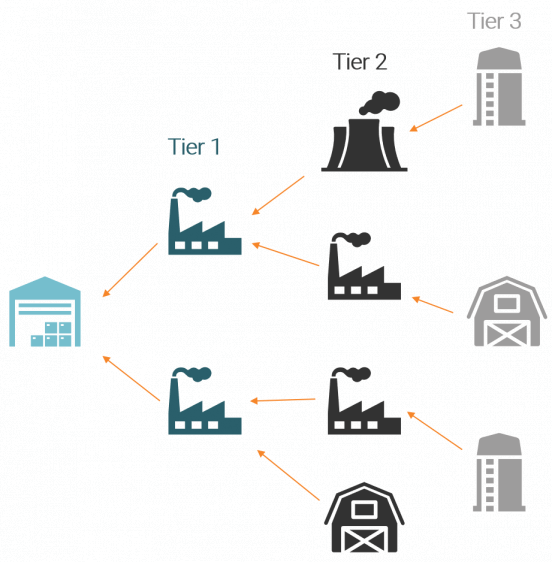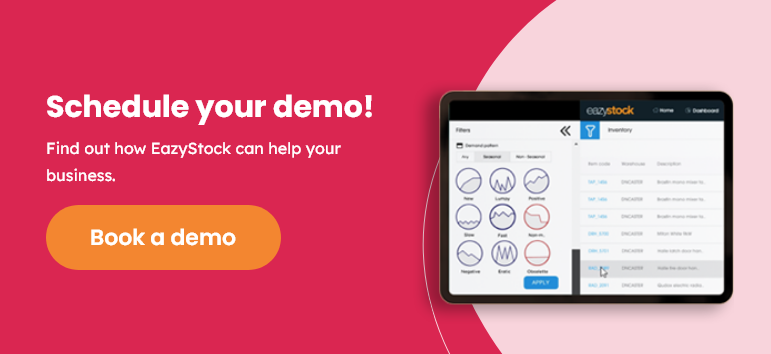Impact of Supply Chain Disruption Explained
As globalization extends supply chains around the world, the likelihood of negative impacts stemming from supply chain disruption increases. Supply chain disruptions are an inevitability for any supply chain, though the severity of the impacts can vary. In this piece, we’ll take a look at some of the top types of supply chain disruptions, the impacts that they have on your supply chain, how to mitigate whatever risk you can and finally how you can handle supply chain disruptions once they occur and come out on top.
Types of supply chain disruptions
There are a wide range of supply chain disruptions that can affect any part of the supply chain. With so many possibilities, supply chain disruptions don’t necessarily all fall into tidy buckets, but here are a few categories to watch out for within your own supply chain:
Holidays
Holidays affect supply chains in a couple different ways. One of the most obvious changes is demand, especially for retailers. Customers will flock to stores and websites to purchase gifts and holiday décor. The other effect that holidays have on the supply chain, however, lies at the other end: manufacturing. Especially for companies sourcing goods from China, Chinese (or Lunar) New Year marks a 2-week (and often longer) holiday for Chinese manufacturers. In this case, supply completely drops off as manufacturers are closed.

Black swan events
A black swan event is an unexpected event with severe consequences, like the Great Recession or the current COVID-19 pandemic. While there’s been some debate as to whether the COVID-19 pandemic truly qualifies as a black swan event, there’s no denying the massive impact that the pandemic has had on supply chains around the world, affecting the creation, shipping, movement of and demand for goods.
Natural disasters/extreme weather
This category is sometimes lumped together with black swan events. Natural disasters include earthquakes, tsunamis, hurricanes, tornadoes, wildfires, floods, etc. Some have more predictable seasons (monsoon and tornado season spring to mind), but these kind of events – even if it’s a localized disaster – can have far-reaching effects down the supply chain. When one link in the supply chain is shut down, the effect can be felt throughout the supply chain resulting in delayed or cancelled deliveries, closed ports, drastically unbalanced supply and/or demand.
Transportation failures
This is a major byproduct of globalization, as suppliers are increasingly international. Transportation failures can be the effect of some of the other disruptions listed here, but they also qualify as their own supply chain disruption with cargo theft, shipping damage, even changing regulations. The recent US-China trade war, Brexit, even the COVID-19 pandemic all sparked new regulations that caused prices and tariffs to fluctuate wildly and interrupted supply chains globally.

Cyber attacks
Supply chain management has entered the realm of digitalization, receiving all the benefits and challenges that come with it. Cyber attacks on supply chains include anything from holding systems hostage to data breaches that compromise individuals’ information. There have been high-profile data breaches in recent years, such as the Target data breach that affected 41 million consumers and their payment cards.
Impacts from disruptions
We’ve already alluded to some of the impacts stemming from supply chain disruptions. In this next section, we’ll take a deeper look at the ramifications from supply chain disruptions.
Changes in supply
Supply changes typically manifest as a shortage for myriad reasons. It could be something as simple as a limited release. Usually, however, supply shortages stem from supply chain disruptions such as natural disasters or extreme weather impeding the creation or movement of goods, holidays pausing the creation or distribution of goods, transportation failures resulting in missing or delayed goods, even quality management checks can result in a shortage for goods that don’t pass muster.
Changes in demand
At the other end of the supply chain, there are demand changes – either an increase or a decrease. Some demand changes are predictable with things like seasonal items (that is, items with a seasonal demand) or items for certain holidays. But even predictable demand changes still take planning to keep fulfillment levels high. Demand can also surge unpredictably – one recent example is the sudden increase in demand for personal protective equipment (PPE) with the spread of COVID-19. When demand surges occur unexpectedly, the way companies react depends on their supply chain limitations.
The flip side of demand surges are demand drops. Again, some are anticipated – like the end of a “season” for a product that is subject to seasonal demand – and, again, these require planning to navigate. But more often, demand drops are unexpected. To continue with the COVID-19 theme: air travel came to a halt with COVID-19, impacting the industries that support travel such as hospitality, airport suppliers, even airplane parts suppliers and manufacturers.
Delivery disruptions/cancellations
Delivery disruptions and cancellations include deliveries that your company receives along with deliveries your company sends out. Chinese New Year is one example of a disruption – manufacturers and suppliers in China typically shut down production and do not send out any deliveries during this 2- to 4-week period, due to the fact that workers often travel home for festivities. This can be planned for, but more often than not, delivery disruptions and cancellations are unplanned. When COVID-19 hit, China (who made half the world’s masks before the pandemic and has increased production since then) suddenly ceased exporting PPE masks and added blank (or void) sailings, leaving companies outside of China scrambling to source.
 At the other end of the supply chain, last mile logistics brings challenges. People nowadays have high expectations for delivery – both personally and professionally – and last mile logistics represents the most expensive and time-consuming part of shipping. The typical lack of transparency into this final stage of delivery also makes it a prime place for delivery disruptions and cancellations.
At the other end of the supply chain, last mile logistics brings challenges. People nowadays have high expectations for delivery – both personally and professionally – and last mile logistics represents the most expensive and time-consuming part of shipping. The typical lack of transparency into this final stage of delivery also makes it a prime place for delivery disruptions and cancellations.
Price changes/fluctuations
Price changes and fluctuations can be caused by things like new tariffs, changes in demand, availability, the price of the raw materials or even the nature of the product itself (such as crude oil). Like the rest of the effects of supply chain disruption, some price changes and fluctuations are predictable, some are not. When it comes to price changes, there is only so much you can do to mitigate the effects to your supply chain. Then it comes down to determining if you need to switch suppliers, eat the cost or change your own prices.
Mitigate risk of supply chain disruption
Supply chain disruption is uncomfortable to think about. It is not a question of if, but rather when, and in most cases, there is a limit to how much you can do to mitigate it. Once a disruption hits, the task becomes upholding your priorities. But there are still several tactics that you can add to your supply chain management strategy to safeguard your supply chain where possible, though it’s important to keep in mind that any measures taken will inherently have their own risk for disruption.
Emergency backup plan
This should be in place before any disruptions occur and have a chance to wreak havoc on your supply chain. You need to determine what your priorities will be in the event of a supply chain disruption. Is it customer fulfillment? Is it minimizing investment to preserve capital? You should also determine who are the most important customers to keep happy and focus on servicing them however you can. Additionally, setting aside an emergency budget is also a good practice so you can get back on your feet and have your supply chain operational as quickly as possible.
Minimize the number of supplier tiers
Do you know how far your supply chain stretches? Your tier 1 suppliers are those who supply directly to you. Your tier 2 suppliers are those who supply directly to your tier 1 suppliers. Tier 3 supplies to your tier 2, and so on. The longer your supply chain stretches (i.e. the more tiers you have) the greater your risk of supply chain disruption. What happens when your tier 2 suppliers can’t fulfill the demand from your tier 1 suppliers? Minimizing the number of tiers could go a long way. This is a difficult tactic, however, so it also helps to minimize the potential for supply chain disruptions among your different supplier tiers. As you know, it’s impossible to eliminate risk, but you can still do what you can. For example, finding tier 1 suppliers with tier 2 suppliers within the same country and near each other to eliminate additional tariffs and borders along with shortening lead time. But, realistically, mitigating the risk to your tier 1 suppliers should be the biggest focus.

Infographic demonstrating supplier tiers.
Diversify suppliers
Sourcing from different suppliers in different regions and even different countries helps remove some supply chain risks. As the saying goes, “Don’t put all your eggs in one basket.” Sourcing from different regions and countries will help keep your supply chain operating if, for example, one supplier suffers from a disruption (like a natural disaster or extreme weather) or if your supply chain is interrupted due to new regulations (like border closures or additional tariffs). Supplier diversification also allows companies to compare costs and bring more flexibility.
Invest in tech
This is two-fold. There is technology to keep your supply chain secure; cyber attacks are a costly supply chain disruption. The Target data breach alluded to earlier resulted in the company paying an $18.5M settlement. It’s impossible to successfully manage a global supply chain nowadays without technology, so you need to ensure that security is a part of your plan. There are even tools you can use to evaluate the cyber risk to your supply chain.
 But in addition to security, you can also invest in technology that manages the moving parts of your supply chain for increased visibility. Enterprise resource planning and warehouse management systems are helpful for managing your supply chain within your company. There are also plenty of tools to help with supply chain management like an inventory optimization tool that helps you manage suppliers or multi-carrier shipping software that helps you manage and oversee last mile logistics.
But in addition to security, you can also invest in technology that manages the moving parts of your supply chain for increased visibility. Enterprise resource planning and warehouse management systems are helpful for managing your supply chain within your company. There are also plenty of tools to help with supply chain management like an inventory optimization tool that helps you manage suppliers or multi-carrier shipping software that helps you manage and oversee last mile logistics.
Handling supply chain disruptions
Supply chain disruptions are only a matter of time, though hopefully they will only occasionally impact your supply chain. While you can take steps to try and mitigate supply chain disruptions, you also need to have a plan in place for when the inevitable happens. Here are a few tips for handling supply chain disruptions when they come:
Evaluate the supply chain
How did the supply chain disruption impact your supply chain? What will it take for your supply chain to recover? How can you keep operations running smoothly in the interim? This step requires that you review your suppliers, assess your available inventory and capacity to handle incoming orders, and analyze customer buying patterns. Part of your recovery solution includes using what you have to keep your business running.
Increased supply chain visibility with added technologies will allow you to evaluate the impact of the supply chain disruption and manage recovery accordingly. For example, an inventory optimization tool will allow you to analyze what you have in stock and on order. Increased supply chain digitalization also allows for greater flexibility. One example from the COVID-19 pandemic is the rise in remote working; digitalization allowed for companies to continue running operations while not necessarily in person.

Communication is key
Open and clear lines of communication is important throughout your entire supply chain. With suppliers and within your own company, make sure everyone understands the extent of the disruption, the next steps and how operations are being handled in the meantime. If you are using a tool like inventory optimization software, you can adjust your inventory parameters in response to a disruption. For example, maybe supplier lead times have gotten longer or they will be shutting down for 2 weeks; these are changes you can make in your software so it will automatically compensate to keep your business going.
It’s important to be transparent with customers too – make sure they know what to expect from you (delayed or partial shipments, limited availability, price changes, etc.) Being honest and clear about any challenges helps manage customer expectations and builds trust.
Focus on your priorities
Part of your backup plan is predetermining priorities for you company (i.e. preserving capital, continuing customer fulfillment, etc.); now is the time to act on it. If you’re committed to continuing to serve your customers, having an overview of your existing inventory along with information on when to expect new deliveries will go a long way. This will allow you to continue to fulfill customer orders. If you have limited inventory due to the disruption, you can also determine your key customers to keep happy and prioritize fulfilling those orders.
If retaining capital is your top priority, an inventory optimization tool will give you insight into how your inventory can support this. It’ll show you what inventory you have available on hand including excess and obsolete stock you can try to sell off to recoup capital while freeing up warehouse space for more profitable items. Plus, you’ll be able to use the order functionalities like order fill-up and order calendar to optimize your replenishment from your suppliers.
Building a more resilient supply chain
Supply chain disruptions are inevitable, but they don’t have to be the end of your business. By using the steps above to mitigate the risks that you can as well as responding quickly and decidedly to any disruptions, you can build a stronger, more resilient supply chain. Continuing to learn from supply chain disruptions and applying new techniques to your supply chain management fosters flexibility.
If you’re interested in learning more about how an inventory optimization solution can help you overcome the impact from supply chain disruptions, as well as support day-to-day supply chain management, don’t hesitate to reach out at +1 (844) 416-5000 or schedule a demo.








